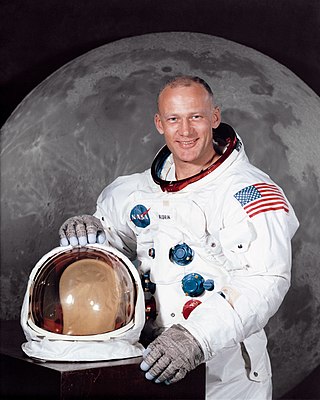
Buzz Aldrin is an American former astronaut, engineer and fighter pilot. He made three spacewalks as pilot of the 1966 Gemini 12 mission, and was the Lunar Module Eagle pilot on the 1969 Apollo 11 mission. He was the second man to walk on the Moon after mission commander Neil Armstrong.

Geoffrey Alan Landis is an American aerospace engineer and author, working for the National Aeronautics and Space Administration (NASA) on planetary exploration, interstellar propulsion, solar power and photovoltaics. He holds nine patents, primarily in the field of improvements to solar cells and photovoltaic devices and has given presentations and commentary on the possibilities for interstellar travel and construction of bases on the Moon, Mars, and Venus.

The Vision for Space Exploration (VSE) was a plan for space exploration announced on January 14, 2004 by President George W. Bush. It was conceived as a response to the Space Shuttle Columbia disaster, the state of human spaceflight at NASA, and as a way to regain public enthusiasm for space exploration.
The International Space Development Conference (ISDC) is the annual conference of the National Space Society (NSS). Now in its 41st year, these conferences connect the general public and the NSS membership with leaders of contemporary space efforts. The ISDC provides a nexus for industry, government, scientists, advocates, and the public to meet and discuss the latest issues in space technology, science, policy, commerce, medicine, exploration, settlement and much more. Winners of the annual NASA space settlement Contest annually attend the conference, with several interesting activities and programs. With National Space Society's major goal being to accelerate the process of space exploration and development they also foster astronautics for students by encouraging them and getting them involved.

Voyage is a 1996 hard science fiction novel by British author Stephen Baxter. The book depicts a crewed mission to Mars as it might have been in another timeline, one where John F. Kennedy survived the assassination attempt on him on 22 November 1963. Voyage won a Sidewise Award for Alternate History, and was nominated for the Arthur C. Clarke Award in 1997.
4Frontiers Corporation is an American space commerce company, founded in 2005.
Michael W. Carroll is an astronomical artist and science writer. His art has appeared in magazines such as TIME, National Geographic, and Astronomy, and has flown aboard the Russian space station Mir and NASA's Phoenix Mars lander. He is also a founding member of the International Association of Astronomical Artists.

Apollo 11 was the first human spaceflight to land on the Moon. The 1969 mission's wide effect on popular culture has resulted in numerous portrayals of Apollo 11 and its crew, Neil Armstrong, Buzz Aldrin, and Michael Collins.
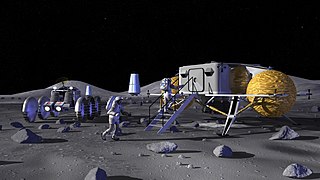
NASA proposed several concept moonbases for achieving a permanent presence of humans on the Moon since the late 1950s. Research and exploration of the Moon has been a large focus of the organization since the Apollo program. NASA's peak budget was in 1964-1965, when it comprised 4% of all federal spending in service of the Apollo Moon landing project. Though lunar landings ever since the conclusion of the Apollo program in 1972 have ceased, interest in establishing a permanent habitation on the lunar surface or beyond low Earth orbit has remained steady. Recently, renewed interest in lunar landing has led to increased funding and project planning. NASA requested an increase in the 2020 budget of $1.6 billion, in order to make another crewed mission to the Moon under the Artemis program by 2025, followed by a sustained presence on the Moon by 2028. A crew was selected for the planned crewed mission, Artemis II, in April 2023.
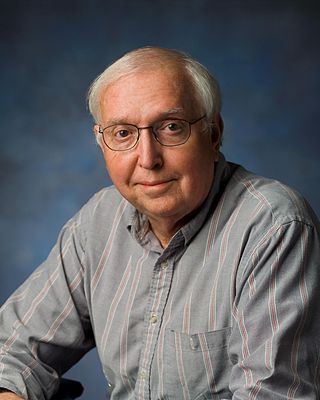
David Stewart McKay was chief scientist for astrobiology at the Johnson Space Center. During the Apollo program, McKay provided geology training to the first men to walk on the Moon in the late 1960s. McKay was the first author of a scientific paper postulating past life on Mars on the basis of evidence in Martian meteorite ALH 84001, which had been found in Antarctica. This paper has become one of the most heavily cited papers in planetary science. The NASA Astrobiology Institute was founded partially as a result of community interest in this paper and related topics. He was a native of Titusville, Pennsylvania.
Apogee Books is an imprint of Canadian publishing house Collector's Guide Publishing. The Apogee imprint began with "Apollo 8 The NASA Mission Reports" in November 1998 at the request of astronaut Buzz Aldrin, second man on the moon. The first publication by Apogee was printed to celebrate the 30th anniversary of the first crewed flight around the moon. A limited edition print run of this Apollo 8 book led to Aldrin suggesting that the imprint continue with further anniversary publications.
Robert Godwin is a British author who has written about rock music and spaceflight. Early in his career he was a rock music impresario who managed a venue in Burlington, Ontario, and founded Griffin Music.
The Eugene M. Emme Award is an award given annually to a person or persons selected by a panel of reviewers from the American Astronautical Society History Committee to recognize "the truly outstanding book published each year serving public understanding about the positive impact of astronautics upon society." The award is in honor of Eugene M. Emme, NASA's first historian.

Mars to Stay missions propose astronauts sent to Mars for the first time should intend to stay. Unused emergency return vehicles would be recycled into settlement construction as soon as the habitability of Mars becomes evident to the initial pioneers. Mars to Stay missions are advocated both to reduce cost and to ensure permanent settlement of Mars. Among many notable Mars to Stay advocates, former Apollo astronaut Buzz Aldrin has been particularly outspoken, suggesting in numerous forums "Forget the Moon, Let’s Head to Mars!" and, in June 2013, Aldrin promoted a crewed mission "to homestead Mars and become a two-planet species". In August 2015, Aldrin, in association with the Florida Institute of Technology, presented a "master plan", for NASA consideration, for astronauts, with a "tour of duty of ten years", to colonize Mars before the year 2040. The Mars Underground, Mars Homestead Project / Mars Foundation, Mars One, and Mars Artists Community advocacy groups and business organizations have also adopted Mars to Stay policy initiatives.

The space policy of the Barack Obama administration was announced by U.S. President Barack Obama on April 15, 2010, at a major space policy speech at Kennedy Space Center. He committed to increasing NASA funding by $6 billion over five years and completing the design of a new heavy-lift launch vehicle by 2015 and to begin construction thereafter. He also predicted a U.S.-crewed orbital Mars mission by the mid-2030s, preceded by the Asteroid Redirect Mission by 2025. In response to concerns over job losses, Obama promised a $40 million effort to help Space Coast workers affected by the cancellation of the Space Shuttle program and Constellation program.
UFO sightings in outer space are sightings of unidentified flying objects reported by astronauts while in space that they could not explain at the time. These sightings have been claimed as evidence for alien visits by ufologists.
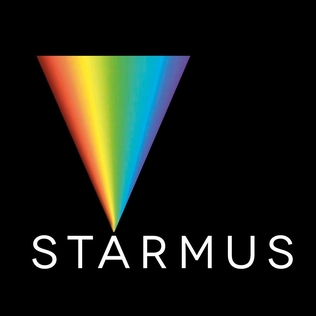
The Starmus International Festival is an international gathering focused on celebrating astronomy, space exploration, music, art, and the natural sciences. It was founded by astronomer / amateur musician Garik Israelian and musician / astrophysicist Brian May. The festival has featured multiple well-known astronauts and astronomers.
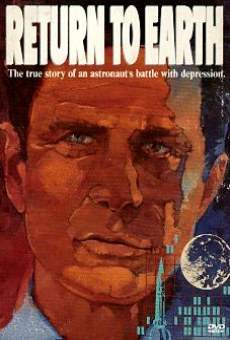
Return to Earth is an American biopic television film that originally aired on May 14, 1976 on ABC. The film stars Cliff Robertson as astronaut Buzz Aldrin and Shirley Knight as Joan Aldrin. Based upon Aldrin's 1973 book of the same name, the film dramatizes the emotional difficulties of Aldrin's life following his 1969 trip to the Moon on Apollo 11. The film was directed by Jud Taylor, and Aldrin served as a consultant.
Martin L. Shoemaker is an American computer programmer and science fiction author, active in the field since 2011.

Lunar Module Eagle (LM-5) is the spacecraft that served as the crewed lunar lander of Apollo 11, which was the first mission to land humans on the Moon. It was named after the bald eagle, which was featured prominently on the mission insignia. It flew from Earth to lunar orbit on the command module Columbia, and then was flown to the Moon on July 20, 1969, by astronaut Neil Armstrong with navigational assistance from Buzz Aldrin. Eagle's landing created Tranquility Base, named by Armstrong and Aldrin and first announced upon the module's touchdown.













